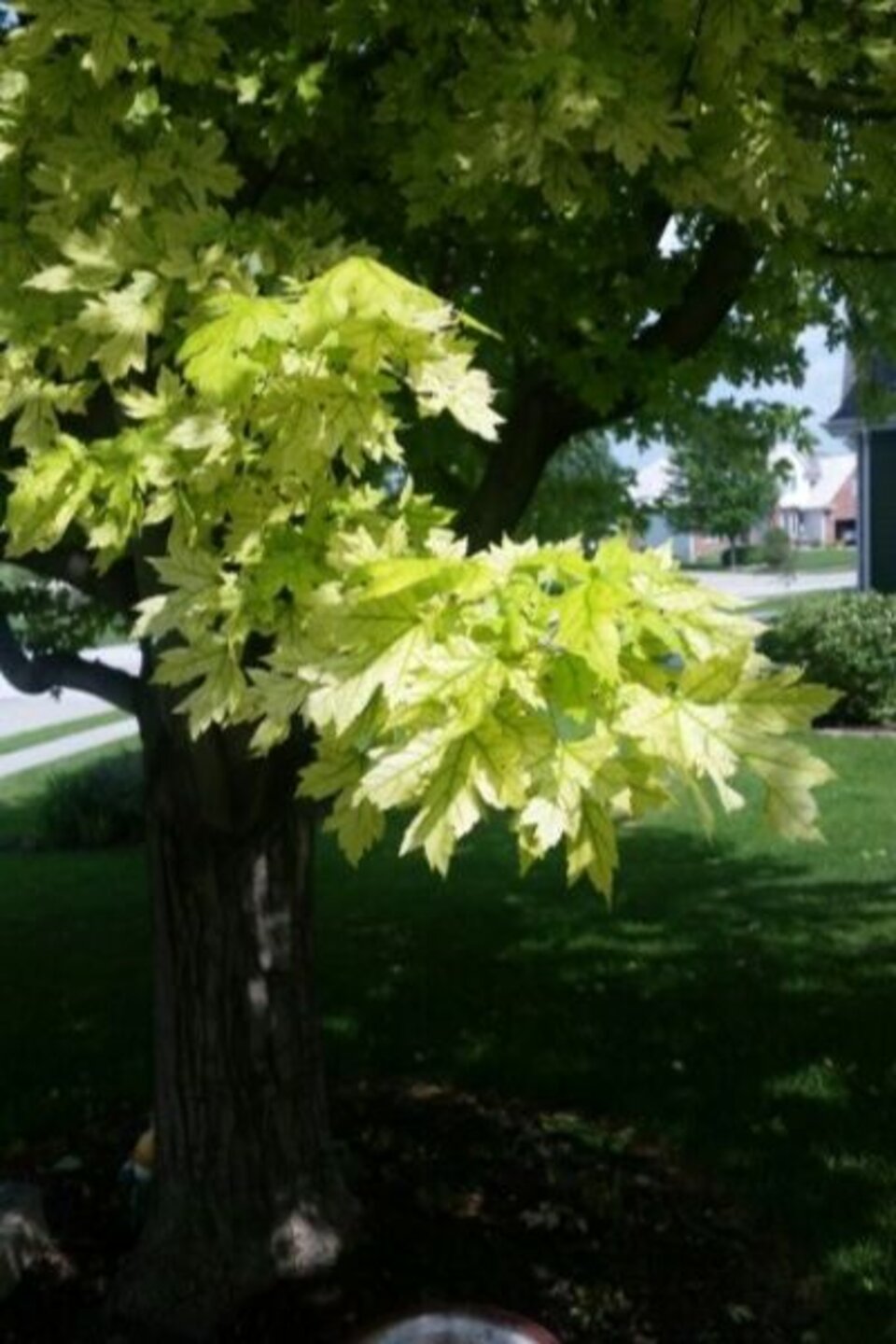Moisture Problems for Trees and Other Landscape Plants

The excess rain this year is a change from many years where we are already worried about drought stress on our landscapes. However, excess moisture is causing problems in our landscapes this year from fungal diseases as well as nutrient deficiencies.
Chlorosis
Chlorosis is a condition that occurs to many tree species with symptoms of the leaves or needles developing an abnormally light green or yellow color. Chlorosis is typically caused by a deficiency of iron in the plant tissues. With iron chlorosis, the leaves will be lime green in color while the veins of the leaves remain darker green. Chlorosis can also be caused by over-watering, over-fertilization, and damage to roots among other things. This year, with the high levels of moisture we have seen this spring and summer have led to a lot of chlorosis in trees like birches, maples and oaks.
Chlorosis happens commonly in southeast Nebraska soils because of our high pH levels. The pH in an alkaline or clay soil is higher and that high pH will tie up the iron making it unavailable to trees. Iron is sufficient in the soil but it is not available to the tree. In overwatered or compacted soils, the roots have low oxygen levels that can affect the ability of the roots to pick up iron and other micronutrients. The excessive rains this year have caused more chlorosis than other years because the roots are lacking oxygen and can’t pick up the nutrients they need.
Anthracnose
Anthracnose is a fungal disease that affects the leaves of many ornamental trees. It is seen primarily on sycamores and maples but can be seen on many trees including oaks, ash, and walnut. It causes irregularly shaped brown areas on the leaves. The affected portions of the leaf will follow the veins and will eventually cause death of the leaf and stem tissue. This disease is primarily an aesthetic issue, it will not kill the tree, at least not in only one year of infection. Because of this, Fungicides are rarely recommended.
Anthracnose is more common under cool, wet conditions, which is why we are seeing it this year. The fungi is host specific, so if anthracnose affects your ash tree, that fungi will not spread to the maple tree. However, if the conditions are favorable for anthracnose on one host, it is likely that it will be found in multiple hosts.
There is an anthracnose found in cucumbers and other cucurbit or vine crops in the garden as welll. If your cucumbers have anthracnose on some leaves, pinch those leaves off and destroy them, don’t compost them and don’t leave them around your plants. Fungicides are not usually cost effective for home gardeners, but mancozeb or other copper fungicides can be used to minimize damage to plants if desired. Be sure to read and follow all instructions on the product label.
Septoria Leaf Spot
Septoria leaf spot is a problem showing up this year on our perennial plants including mums, coneflowers, coreopsis, blanket flower, lambs ear, and many more. This is another fungal disease showing up with all of the rain this year. With septoria, purplish to brown colored spots will develop on the leaves, sometimes completely covering the leaves. It tends to start on the older foliage of the plant, but if overhead irrigation or excessive rain events continue, it can continue to spread through the plant. If you see Septoria leaf spot in your garden, remove infected plant parts. Fungicides such as copper can be used for Septoria leaf spot as well if desired.
Septoria leaf spot can also be found in tomato plants. It will appear on the leaves as small spots with a whitish center and dark colored border. Eventually the spots can coalesce into larger spots and destroy entire leaves. It can lead to defoliation and in severe cases even death of the plants. As you see Septoria leaf spot on your tomato plants, remove the foliage. Copper fungicides can also be used but should be used at first sign of the disease to reduce the spread. Also, avoid overhead irrigation to reduce spores splashing and spreading the disease; water only at the base of the plants.
This article was reviewed by John Fech